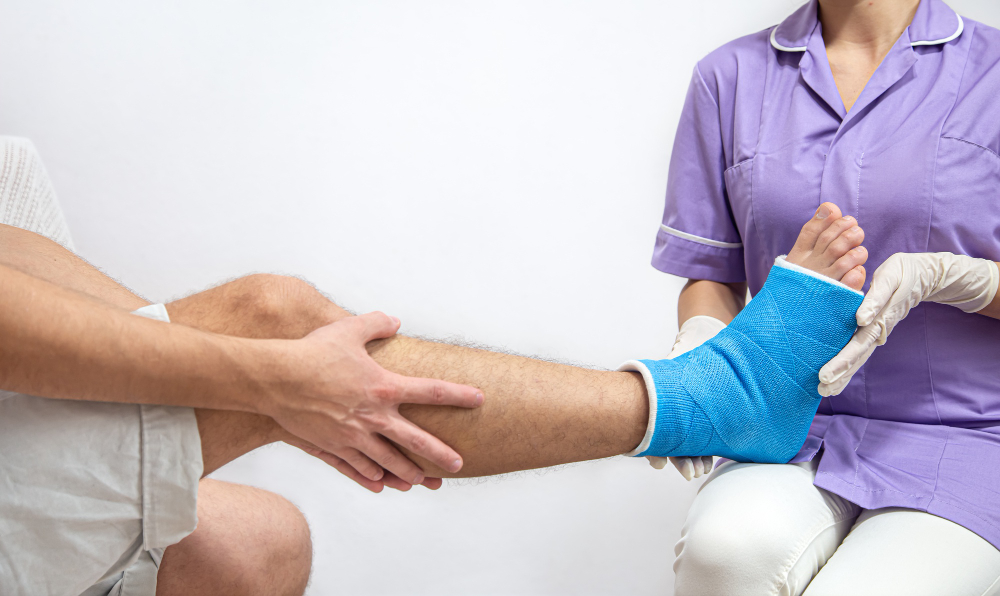
January marks Thyroid Awareness Month, shedding light on a crucial gland that affects various aspects of our health, including our feet. While many are familiar with common thyroid symptoms, few realize the significant impact this small butterfly-shaped gland can have on foot health. In this comprehensive guide, we’ll explore seven ways thyroid dysfunction can affect your feet and how podiatrists can provide essential care and treatment.
1. Cold Feet: More Than Just a Saying
One of the most common foot-related symptoms of thyroid disease, particularly hypothyroidism, is persistently cold feet. When thyroid function is diminished, it can lead to reduced circulation, causing your feet to receive as little as one-fourth to one-fifth of the normal blood supply5. This decreased blood flow makes your feet especially vulnerable to cold temperatures. If you find your feet are consistently cold, even in warm environments, it could be a sign of an underactive thyroid. A podiatrist can assess your circulation and recommend appropriate treatments to improve blood flow, such as specialized exercises or compression socks.
2. Swelling: When Your Feet Feel Puffy
Edema, or swelling in the feet and ankles, is another common symptom associated with thyroid dysfunction. This swelling occurs due to fluid retention, a common side effect of hypothyroidism. While there are many potential causes of foot swelling, if you notice it happening regularly, it may be worth having your thyroid checked. Podiatrists can help manage this symptom by recommending elevation techniques, prescribing compression garments, or suggesting specific exercises to reduce swelling. They can also rule out other potential causes of edema and refer you to an endocrinologist if necessary.
3. Dry, Cracked Skin: More Than Just Winter Woes
Studies have shown that the majority of people with hypothyroidism report coarse, rough, dry skin, particularly on their feet. This dryness can lead to painful cracks, especially on the heels. In some cases, the skin may appear almost leathery in texture and thickness. A podiatrist can provide treatments to alleviate this symptom, such as specialized moisturizers, gentle exfoliation techniques, and recommendations for proper foot hygiene. They can also address any painful fissures that may develop as a result of extremely dry skin.
4. Muscle Cramps and Pain: Not Just From Overexertion
Thyroid dysfunction can lead to muscle cramps and pain in the feet3. While these symptoms can have various causes, persistent and unexplained foot pain should prompt consideration of thyroid issues. Hypothyroidism, in particular, can cause a condition known as hypothyroid myopathy, which affects muscle function and can lead to pain and weakness. Podiatrists can help manage this pain through various treatments, including physical therapy, custom orthotics, and appropriate footwear recommendations. They can also help differentiate between thyroid-related pain and other foot conditions.
5. Increased Risk of Infections: When Your Feet Are More Vulnerable
Both hyperthyroidism and hypothyroidism can predispose individuals to foot infections, including fungal infections like athlete’s foot. This increased susceptibility is due to changes in skin integrity and immune function associated with thyroid disorders. Podiatrists play a crucial role in preventing and treating these infections. They can provide guidance on proper foot hygiene, recommend antifungal treatments, and monitor for any signs of more serious infections that may require additional intervention.
6. Nail Changes: More Than Just a Cosmetic Concern
Thyroid dysfunction can cause changes in both fingernails and toenails7. These changes may include brittleness, slow growth, or separation from the nail bed. While nail changes alone aren’t definitive proof of thyroid issues, they can be an important clue when combined with other symptoms.A podiatrist can assess nail health, provide treatments for damaged nails, and offer advice on proper nail care. They can also monitor for any signs of fungal infections, which can be more common in individuals with thyroid disorders.
7. Joint Pain and Stiffness: When Walking Becomes a Challenge
Thyroid disease, particularly hypothyroidism, can lead to joint pain and stiffness in the feet6. This discomfort can make it challenging to walk, stand, or engage in daily activities. In some cases, thyroid-related joint issues can mimic symptoms of arthritis. Podiatrists can provide significant relief for these symptoms. They may recommend specific exercises to improve joint mobility, prescribe custom orthotics to provide better support, or suggest appropriate footwear to reduce stress on the joints. In some cases, they may also recommend physical therapy or other treatments to alleviate pain and improve function.
How Podiatrists Can Help
Podiatrists play a crucial role in managing foot-related symptoms of thyroid disease. Here are some ways they can help:
- Diagnosis: While podiatrists don’t diagnose thyroid disorders, they can recognize foot symptoms that may indicate thyroid issues and refer patients to endocrinologists for further evaluation.
- Custom Orthotics: These specialized shoe inserts can provide improved cushioning and support, helping to alleviate pain and improve foot function
- Footwear Recommendations: Proper shoe choices are crucial for those with thyroid-related foot issues. Podiatrists can provide guidance on selecting shoes that offer adequate support and comfort9.
- Treatment of Infections: Podiatrists can diagnose and treat fungal and bacterial infections that may be more common in those with thyroid disorders.
- Pain Management: Through various treatments, including physical therapy and medication recommendations, podiatrists can help manage foot pain associated with thyroid dysfunction.
- Regular Monitoring: For those with known thyroid disorders, regular podiatric check-ups can help catch and address foot issues early.
At WeTreatFeet we know that while thyroid disease affects the entire body, its impact on foot health shouldn’t be overlooked. By being aware of these potential foot-related symptoms and seeking help from a podiatrist, individuals with thyroid disorders can take important steps towards maintaining their overall foot health and quality of life. Remember, your feet can be important indicators of your overall health, so don’t ignore what they’re trying to tell you.
FAQ: How Thyroid Issues Impact Your Feet
1. How does hypothyroidism affect my feet?
Hypothyroidism, or an underactive thyroid, can cause several foot problems including persistent cold feet due to poor circulation, swelling (edema), dry and cracked skin (especially on the heels), and even nerve issues like tarsal tunnel syndrome. These symptoms arise because a slowed metabolism affects blood flow and skin health, making your feet more susceptible to discomfort and injury
2. Can thyroid problems cause foot pain or muscle cramps?
Yes. Both hypothyroidism and hyperthyroidism can lead to muscle weakness, cramping, and joint pain in the feet and ankles. In some cases, untreated thyroid issues can contribute to chronic pain or stiffness in the lower extremities, impacting your ability to walk comfortably
3. Why do people with thyroid disorders often have dry, cracked, or itchy feet?
Thyroid hormones help regulate skin moisture and cell turnover. When hormone levels are low, as in hypothyroidism, the skin on your feet can become dry, thickened, cracked, or even itchy. This is a common and sometimes early sign of thyroid dysfunction in the feet
4. Are swollen feet a sign of thyroid disease?
Frequent or unexplained swelling in the feet and ankles can be a sign of thyroid dysfunction, particularly hypothyroidism. This swelling is often due to fluid retention and may be accompanied by other symptoms like fatigue or cold intolerance. If swelling is persistent, it’s important to consult a podiatrist or your primary care provider for evaluation
5. Can thyroid disorders increase my risk of foot infections or nail changes?
Yes. Both underactive and overactive thyroid conditions can make you more prone to foot infections such as athlete’s foot or fungal toenails. Excessive sweating (from hyperthyroidism) or dry, cracked skin (from hypothyroidism) both create environments where infections and nail abnormalities are more likely to occur
If you notice any of these symptoms in your feet, consider discussing thyroid screening with your healthcare provider or podiatrist. Early detection and management can help prevent complications and improve your overall foot health.




